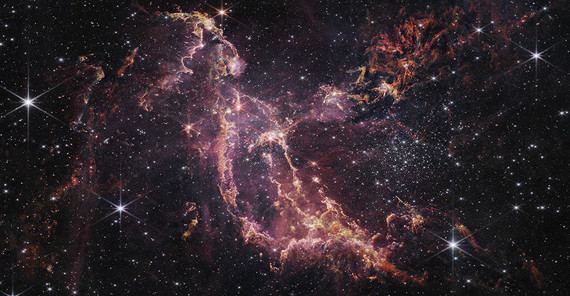Massive stars—those with more than eight times the mass of the Sun—are crucial drivers of galactic evolution, influencing their surroundings through radiation, stellar winds, and stellar explosions, namely supernovae. These kind of stars eject particle streams at very high speeds, causing them to lose mass over time. Understanding their stellar winds and determining how much mass is removed is essential to unraveling their life cycles and broader cosmic impact.
The team investigated 13 massive stars in the cluster NGC 346, a star-forming region about 200 light-years across. NGC 346 is located within the Small Magellanic Cloud which is a satellite galaxy of the Milky Way visible in the southern constellation Tucana. The study, led by University of Potsdam PhD student Armin Mang Román, identified a specific hydrogen line in emission in spectra of all observed massive stars. This “Brackett-Alpha” line is proposed to be key indicator of stellar winds. “Our results confirm predictions from theoretical models and open new paths for measuring fundamental stellar properties using infrared data,” Mang Román summarizes.
The Potsdam group, developers of the renowned PoWR (Potsdam Wolf-Rayet Models) computer code for stellar atmosphere modeling, will now analyze the full JWST dataset to characterize the massive stars in NGC 346. Their findings, published in “The Astrophysical Journal Letters”, mark a major milestone and signal a new era in stellar astrophysics enabled by JWST’s unprecedented capabilities.
Link to Publication: Armin Mang Román et al 2025, First JWST/NIRSpec Spectroscopy of O Stars in the Small Magellanic Cloud, ApJL 984 L49, https://doi.org/10.3847/2041-8213/adcc22
Contact:
Armin Mang Román
Institute of Physics and Astronomy, University of Potsdam
Phone: +49 331/977-5917
E-Mail: amanguastro.physik.uni-potsdampde
Media Information 09-05-2025 / Nr. 051

